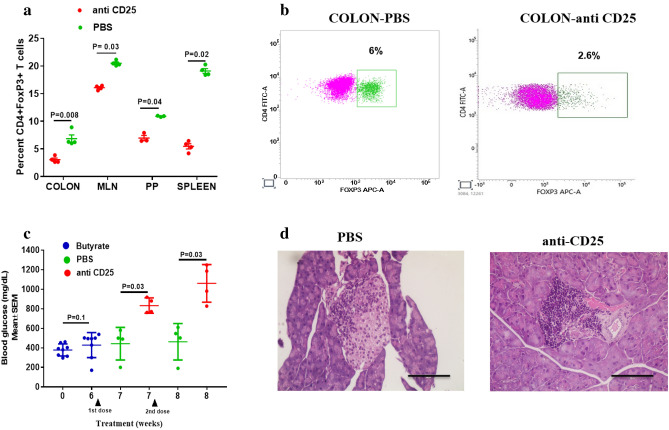Figure 5.
Abolishment of protective effect of butyrate upon Treg depletion. Hyperglycemic NOD female mice (n = 8) were treated with sodium butyrate (150 mM) in drinking water for 6 weeks and randomly divided into two groups. The treatment group (n = 4) received two intraperitoneal injections of anti-CD25 antibody (0.5 mg in PBS), while the control group (n = 4) received PBS alone, one week apart. (a) The frequency of Tregs (CD4 + FoxP3 + T cells) gated on live CD3 + CD4 + T cells in colon, MLN, PP and spleen were assessed by flow cytometry (n = 4 per group). (b) Representative flow cytometry plots show the frequency of CD4 + FoxP3 + T cells in colon of PBS treated and anti-CD25 treated NOD mice. (c) The graph shows the blood glucose levels of hyperglycemic NOD mice at day 0 and 6 weeks after butyrate treatment (n = 8). The graph also shows the blood glucose levels of mice treated with PBS (n = 4) and anti-CD25 (n = 4) at 7th (after the 1st dose of injections) and 8th week (after the 2nd dose of injections). (d) The pancreas were assessed for insulitis at 8th week post treatment in NOD mice. Representative photomicrographs of H&E stained pancreas sections of PBS administered (left) and anti-CD25 administered (right) groups at 40 × magnification; scale bars indicate 100 µm. Statistical significance was determined by Mann–Whitney U test, with P < 0.05 considered significant. Data are shown as mean ± SEM.

